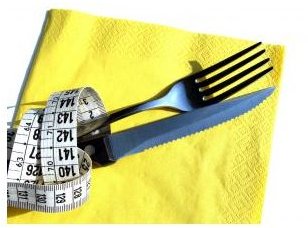How to Calculate the Recommended Number of Calories to Maintain Weight
Defining a Calorie
A calorie is, in basic terms, a unit of energy, defined by the amount of energy necessary to raise the temperature of one kilogram of water by one degree Celsius.
For the purpose of nutrition, the calorie content in your food essentially represents the amount of your body needs to perform in order to process and use the food for energy. Here is a more in-depth explanation of what a calorie is.
Determining Factors
The recommended number of calories needed to maintain one’s weight varies from individual to individual and is based on a number of factors. Of course, one’s height, weight and overall physical condition are the primary factors—but regular activity level (or lack thereof) and other factors are also considered.
People who are considered underweight generally require more calories than they expend to maintain their body weight, while those who are obese may require less than expended to maintain their current body weight.
And, your caloric needs change as you age. In general, the older you get, the less calories you need; however, people who are especially active or who have more muscle tissue will generally require more calories than their counterparts regardless of age.
How to Determine the Recommended Number of Calories to Maintain Weight
A registered dietitian can help you to specifically determine your daily caloric needs by taking all factors into account—but if you don’t have one at your disposal, you can use the Harris-Benedict Formula to get an idea of how many calories you’ll need to maintain your weight.
The Harris-Benedict Formula takes into account one’s activity level and basal metabolic rate (BMR). Your BMR represents the amount of energy (calories) your body uses at rest (in order to perform normal body functions like breathing and digestion each day). You can easily determine your BMR by using a BMR calculator. (https://www.bmi-calculator.net/bmr-calculator/)
It’s important to note that this formula will work for most people, but those who are very muscular may find that it doesn’t allow for enough calories, and those who are obese may find that it allows them too many.
Using the Harris-Benedict Formula
1. Determine your activity level.
- Sedentary—you get little or no exercise.
- Lightly active—you casually exercise or participate in sports 1 to 3 days per week.
- Moderately active—you moderately exercise or participate in sports 3 to 5 days per week.
- Very active—you work out hard or participate in sports 6 to 7 days per week
- Super active—you have a strenuous exercise program or sports schedule every day or almost every day, and/or have a physically demanding job, or are engaged in extreme physical training.
2. Determine your BMR.
3. Determine your equation.
- Sedentary individuals—BMR x 1.2=Recommended number of calories to maintain weight
- Lightly active individuals—BMR x 1.375= Recommended number of calories to maintain weight
- Moderately active individuals—BMR x 1.55= Recommended number of calories to maintain weight
- Very active individuals—BMR x 1.725= Recommended number of calories to maintain weight
- Super active individuals—BMR x 1.9= Recommended number of calories to maintain weight
So, for example, if you are a 30 year old, 5 foot 4 inch woman who weighs 150 pounds, your BMI is 1467.3. If you’re moderately active, your equation would then be:
1467.3 x 1.55=2274.315
It would be fairly safe to assume then that the woman in the example should take in about 2275 calories per day to maintain her weight.
If you’re looking for a quicker way to figure it out, try an online calculator to help give you an estimate of your recommended number of calories to maintain weight.
